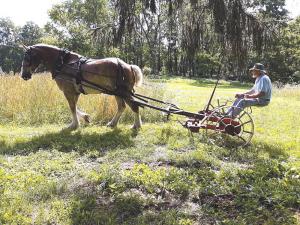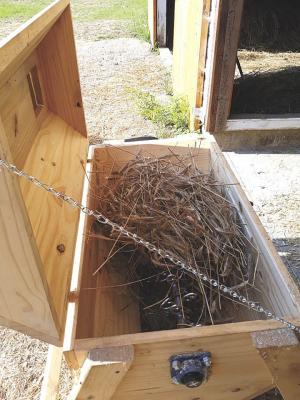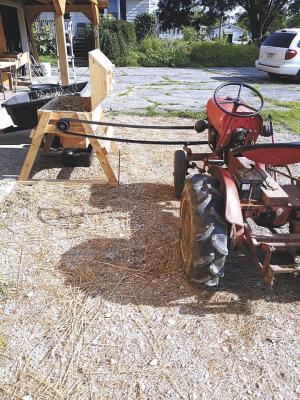2019 - Volume #43, Issue #5, Page #39
[ Sample Stories From This Issue | List of All Stories In This Issue | Print this story
| Read this issue]
One Man’s Experience Harvesting Small Plot Wheat
 |
 |
 |
“I had a 5-lb. bag of Red Fife seed in the freezer for a couple of years, and I was anxious to see if they would still germinate,” says Keim, who described his experience in detail in the Winter 2018 issue of Farming magazine (www.farmingmagazine.net; ph 330 674-1892).
Keim tilled the ground in the fall of 2017 and broadcast the seed by hand. To his surprise, most of it germinated and grew 6 in. tall by the time the ground froze.
When spring came, the wheat took off again. At harvest, it was 3 ft. tall. Keim recalls sharpening his Austrian sickle, grabbing stalks by the handful, and leaving them in piles to be tied into bundles. When gathering them for bundles, he tied them with twisted stalks.
For hand threshing, Keim tried flails, both long handled and short, striking untied bundles laying on a tarp. Not satisfied, he tried a plastic water pipe, which worked better. It took him about 4 days to work through the grain.
“The method was far from perfect, and I believe I lost 20 percent of the crop,” says Keim.
Keim then sifted the chaff and grain in front of a window fan set at high speed. It took some time, but did the job.
Keim tripled his plot size in the fall of 2018. He broadcast the wheat using a hand crank seeder, harrowing with a spike-toothed harrow.
At harvest, Keim used a horse-drawn mower to cut the wheat. “I would mow one swath at a time and then gather the grain so the horse didn’t walk across it,” says the 70-year-old Keim.
Instead of tying off bundles with straw, Keim built a tying box. The 1 by 3-ft. box has 3 slots in the sides for twine to be laid for different length straw.
“You make sure the straw ends are even at the bottom of the box and use the twine about 3/4 of the way up the length of the straw to make the bundle,” says Keim. “It’s a simple way to do a small plot. You can do a quarter acre fairly well.”
Not eager to thresh the wheat by hand again, Keim downloaded small thresher plans from the internet. Essentially his mini thresher is a box with a central shaft and chains to flail the grain. Bundles of grain stalks are put in the box and the top closed, or the stalks are fed in through a hole in the side. Keim runs it off his subcompact tractor.
“It ran too fast, even at idle, but it worked,” says Keim. “I still had to winnow grain with the fan.”
Keim is again upgrading for next year’s harvest. He is going back to a small Keystone thresher, similar to one he once owned. The antique, hand-feed thresher was originally made to replace flailing. Eventually a separator with straw walker, shakers and a fan were added.
“You could buy just the cylinder or the separator, or both, and put them together,” says Keim. “Mine is both, with a conveyer to move the straw into a pile.”
Keim grinds the wheat, as well as rye and Cox Prolific, an old variety of corn, on a small stone mill. He shares his grain with his landlady, who does a lot of baking. He has a limited amount of Red Fife seed for sale.
“I’m selling it for $10 per pound,” says Keim, who recommends small plot production. “I like growing small plots of grain. The journey from seed to harvest to table is a satisfying one.”
Contact: FARM SHOW Followup, Leroy Keim, 162 Timmerman Rd., Mansfield, Ohio 44903 (ph 330 718-2884; rellimup@gmail.com)

Click here to download page story appeared in.

Click here to read entire issue
To read the rest of this story, download this issue below or click here to register with your account number.




